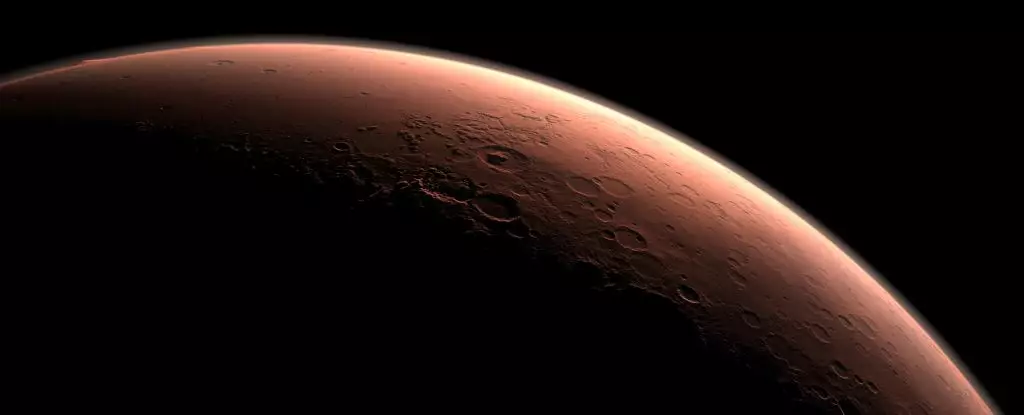Despite decades of exploring Mars, scientists have yet to uncover definitive evidence of extraterrestrial life. The iconic Viking landers, which successfully touched down on the Martian surface in 1976, were the first US missions aimed explicitly at discovering signs of life. However, nearly half a century later, critical assessments reveal that what may have been promising indicators of existence could instead have been obliterated by our own investigative methods. As we rethink our approaches, it’s vital to learn from the past, examine the Viking experiments anew, and consider the impact they may have had on our understanding of potential Martian life forms.
The Viking landers set out with ambitious goals, including conducting a series of groundbreaking experiments designed to analyze Martian soil for biosignatures—indicative molecules that suggest the presence of life. These tests remain the only specifically biological missions on Mars to date. However, the findings of one key experiment, the gas chromatograph-mass spectrometer (GCMS), have left researchers questioning their very methodologies. Initially, the GCMS detected chlorinated organics, a finding that many dismissed as contamination attributed to Earth-based cleaning products. With hindsight, we recognize that this result could indicate that organic compounds are, in fact, intrinsic to Mars, leaving unanswered questions about their origins: are they biological, or are they products of abiotic processes?
As we delve into the intricacies of Viking’s trials, we discover potential flaws in their designs that may have skewed findings. Researcher Dirk Schulze-Makuch from the Technical University Berlin points to the destructive nature of several experiments. The GCMS, designed to heat Martian samples for comprehensive material analysis, might have incinerated vital organic compounds in the process. This raises a crucial question: did our methods inadvertently erase evidence of microbial life? This critical reevaluation compels us to reconsider our experimental designs for future missions.
Dangers of Assumptions
Delving deeper into Viking’s biological testing leads to the realization that our assumptions about Martian life forms may have been misguided. The experiments based on the idea that Martian organisms would behave similarly to those found on Earth indicated a fundamental misunderstanding of the Martian environment. Schulze-Makuch suggests that previous efforts to introduce water into dry Martian samples could have resulted in hyperhydration, effectively drowning life forms adept at thriving in arid conditions. Imagine an alien race rescuing a human suffering in a desert by placing them in the ocean—this analogy aptly captures the perils of imposing Earth-centric views on extraterrestrial biology.
In fact, initial results from pyrolytic release experiments showed more pronounced signs of life when water was excluded from the equation. This significant observation leads to speculative inquiry: did we fail to recognize indicators of life strictly because we did not fully comprehend the nature of Martian organisms? The contradictions in Viking’s results underscore the need for further investigation, as they hint at the possibility that signs of life may have been right under our noses and yet disregarded due to misinterpretations of the data.
Revisiting the hypothesis that Mars might house life forms tailored to survive in extreme dryness opens exciting avenues for exploration. Proposed by Schulze-Makuch and his colleagues, the idea that Martian life could incorporate hydrogen peroxide challenges our Earth-centric thinking and calls for a broader understanding of life’s potential compatibility with seemingly inhospitable environments. With a deeper comprehension of extremophiles—organisms thriving in harsh conditions—scientists are compelled to reconsider what constitutes a livable environment.
As we design new missions aimed at detecting life, employing more sophisticated technologies and methodologies will be crucial. Schulze-Makuch proposes that the next exploration should directly target life detection, taking into account the ecological implications of our past approaches. By meticulously tailoring future experimentation to the unique conditions of Mars, we stand a better chance of uncovering the truths hidden in Martian soil, promising new revelations about the potential for life beyond our planet.
As the quest for extraterrestrial life persists, the legacy of the Viking missions serves as both a historical benchmark and a cautionary tale. Rather than seeing the results of the Viking landers as a dead end in the search for Martian life, they should spur further inquiry. The interplay of methodology, environmental understanding, and biological adaptability offers significant lessons as we stride into an era ripe with new opportunities for Martian exploration. By acknowledging past missteps, refining our approaches, and embracing the complexities of life, we can hope to unravel the mysteries that the red planet still holds.


Leave a Reply